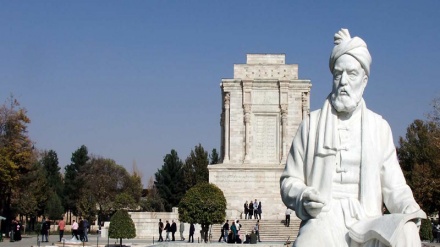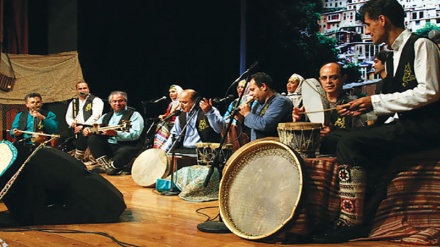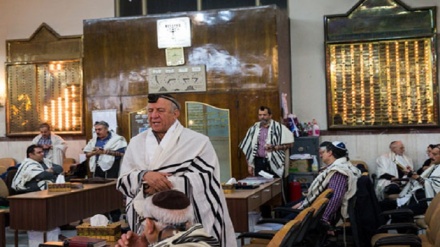Iran: Land of various ethnicities (6)
If you remember the previous episode we briefly introduced the Kurdish people in Iran. But we will detail on their other customs and traditions in the later programs. As for today we are going to briefly make you acquainted with the Lor people.
Lorestan province is located in the west of Iran. This province has an area of 28,000 square kilometers and a population of 1,750,000 people. Khorram Abad is the capital and Borujerd is the second largest city of the province. According to the archaeological findings this region is one of the first habitats of human beings. Before the arrival of Median people to the region the region was peopled by Scythian, Lullubian and Elamite ethnicities. With the arrival of Medians in the Iranian land, these ethnicities migrated to the west of Iran including the present day Lorestan. Upon their arrival in the Zagros Mountains, Medians digested the inhabitants of the region and spread their language over there. After the arrival of Arabs in the region, Lorestan used to be known by the names of Jebal, Lor-e Kuchak (Lesser Lor) and Pishkuh. Lorestan province is mainly located in the mountainous region of Zagros. In the north and northwest this province is neighbor with Hamedan and Markazi provinces; in the east it borders with Isfahan province; in the southeast it extends to Char Mahal Bakhtiyari province; in the south it reaches Khuzestan province and in the west it is neighbor with Kermanshah and Ilam provinces. Besides Lorestan, Lor people live in Char Mahal Bakhtiyari, Fars, Isfahan, Kogiluye Boyer Ahmad, Khuzestan, Hamedan and Ilam provinces. The language of the people is Lori dialect of Farsi language which itself comprises three main branches: Lori, Laki, and Bakhtiyari.
Bakhtiyari branch of Lori dialect is spoken by the Great Lor ethnicity including Bakhtiayri people and the people of Azna and Aligudarz cities. Speakers of Laki branch of Lori dialect mainly reside in the northwest of Lorestan province. But the speakers of Lori branch are the people of the most of Lorestan province. Due to this variety in the Lori dialect the traditions and customs of these people vary to some extent. This variation is clear in the music and songs of different regions. The Lori music includes music of migration, music of harvest, music of livestock breeding, music of winnowing, music of milking, music of whey production, music of rug weaving, music of war, music of settlement and so on. The music of migration itself has subdivisions such as the music of crossing the bridge, music of reaching the summer resort, music of reaching the winter resort, music of ascending the mountain, music of descending the mountain, etc. The Lor people have developed specific songs for different phases of cultivation and various crops, too. Men should leave their wives and families every season or every other season for work and cultivation. This time they perform sad music and recite melancholic songs which contain the difficulties of work and confronting with the nature and the being distant from their near ones. Now let us listen to part of a music composed by Maestro Ali Akbar Shekarchi called Khalq-e Lor (Lor People). It is performed with dramatic rituals and movements.
One of the greatest and most dramatic rituals of Lor people is the ceremony of Chamar or Chamari. Chamar is the ceremony which is performed for the death of an elderly, a noble member of a clan or a youth. It contains the Lori music with its full capacity and the hosts and the guests (both men and women) participate in the role of performer and audience respectively. People from all walks of life come from far distances to take part in the ceremony and sympathize with the bereaved family. Chamar (Chamari) ceremony is also held for the deceased women who have been famous and respected among their tribe and clan or were effective in various domains. The word chamar means circle, gathering and a round shape. It indicates the circular arrangement of the black tents which are prepared for accommodating guests. The participants also display the ceremonies in a circle. The music is played by a special type of drum called Dohol. This music is called Chamari or Chamaryaneh.
Clothes manifest beliefs and traditions of Lor people. The clothes of women are simple but have especial impact on their feeling of security and respect. This respect is so important that if somebody swears by the headscarf or shirt of his mother the listener will be convinced that he is committed to his promise. University professor and researcher, Dara Afshar Quchani, says that clothes are the clearest sign of the identity of an ethnicity or nation for it is the clothes that are judged by the people of other cultures and nations before a person even begins to talk. The clothes of Lor women are intermingled with their needs and the capacities of the region. There are three groups of Lor people in Iran, namely, Bakhtiyari, Boyer Ahmadi and Northern group.
RM/EA


